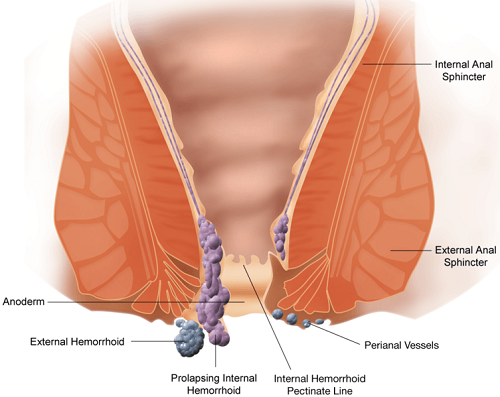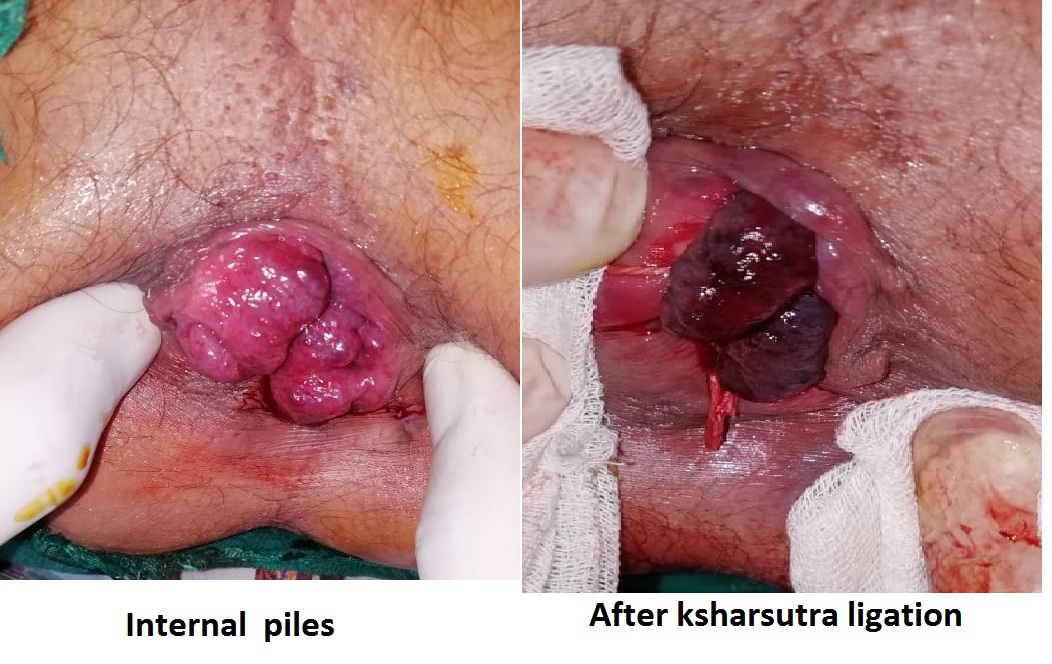
Treatment For Piles
"Piles or hemorroids is a swollen vein or group of veins in the anus region".
Piles is the result of vericose vein in the anal region. In Ayurveda, this is known as Arsha. There are various reasons for developing piles like constipation, excessive stranning during passing stool,off and on loose motion, (I.B.S) irritable bowel syndrome, constantly sitting for a long time on the hard surface, people who is working in long standing job like guard ,drivers , lack of exercise and harmful food habit like food without fiber for piles.
Piles are often found to be occurring more commonly in middle-aged and older individuals.
There are two different types of piles depending upon their location- Internal and External.
Internal Piles are located in the inner lining of the rectum and cannot be felt. They are usually painless and can also lead to bleeding.External Piles, however, can be painful and swollen, and are located on the skin around the anus, and can be felt easily.
There are grade system for internal haemorroids . 1st and 2nd grade internal piles lead without pain with perffuse severe bleeding .In 3rd grade piles patient felt like something coming out side during passing stool and gose inside freely itself.sometime bleeding seen.In 4th grade piles comeout freelly during passing stool, during stiing or working. sometime many piles got strangullation with severe pain and bleeding and can be create a emergency situation .And patient needs hospitalisation .

What are the symptoms of Piles?
The symptoms of Piles can come and go. But there are five main symptoms:
- Perfuse bleeding from the Anus
- Itching and Irritation
- Occasionally Pain and Discomfort
- Tender Lump
- ‘Skid Marks’ on the Underwear
- somthing soft mass coming out from anus and get inside itself
Ayurvedic Treatment For Piles
Since Ayurvedic medicine involves a lot of changes in the diet and lifestyle, some remedies to prevent and treat piles or Arsha are fairly simple and lifestyle-related. We share a common list of ayurvedic remedies to treat piles.
Sedentary Lifestyle: If you are sitting in a particular posture for long hours without any movement can also lead to development of piles.
Avoid eating foods that are hard to digest: Since piles tend to form due to increased pressure on the rectal walls, eat foods that are light and easy to pass as stools. You can increase the intake of fiber-rich fruits and vegetables.
Exercise: Moderate exercise not only just helps treat piles, but also prevents many other lifestyle related disorders.
Eat foods that improve digestion: If you have a weak digestive system, add probiotic-rich foods to your diet.
Drink More Water: A dehydrated body can cause the stools to become hard, making them difficult to pass; drinking more water can make passing stools easier.
Medicinal Way of Treating Piles in Ayurveda
Often Nagakesara is recommended, especially when this is associated with bleeding. One teaspoon-full powder of Nagakesara is given to the patients three times a day.
Haritaki is a useful herb for both dry and bleeding piles. One teaspoon full powder of Haritaki is given to the patients two to three times a day.
Ayurvedic drug Abhayarishta is a widely recommended medicine for this condition. 20 ml of Abhayarishta is given to the patient twice daily after food with an equal amount of water.
Kasiaditaila can be used externally, which helps in shrinking piles and cures itching in the anal region. It helps in relieving pain and checks bleeding.
#treatment for piles , #Piles for Treatments #Best Piles Treatment #Piles Treatment




